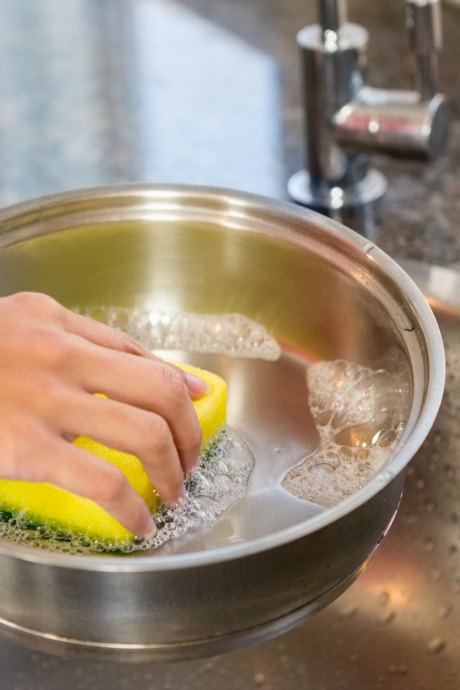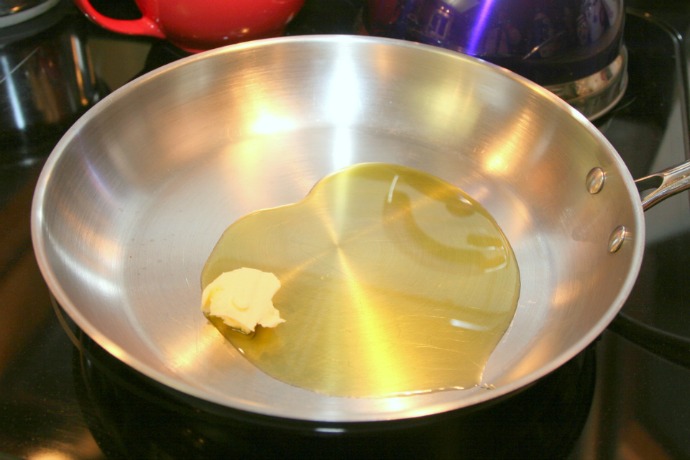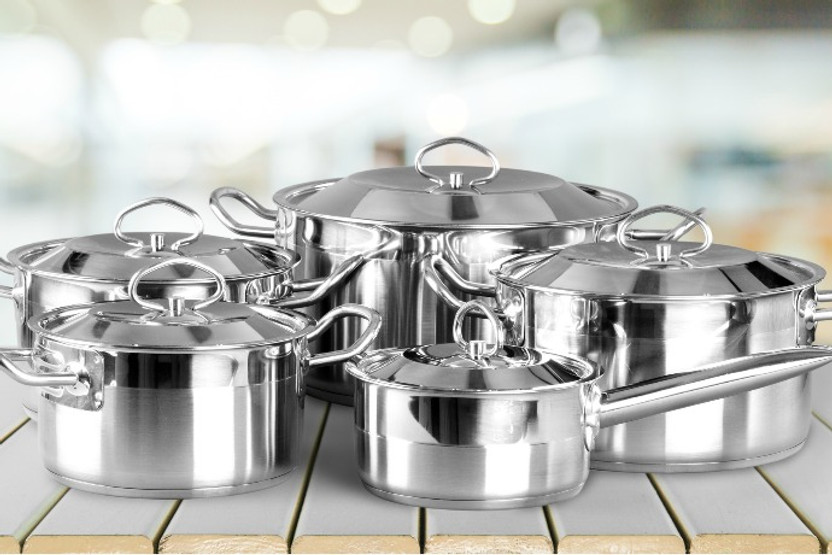Types of Cookware: Stainless Steel
Posted by Julie on Apr 23rd 2018
It's easy to get overwhelmed by all the choices when buying cookware. Not only are there dozens of brands available, but cookware comes in different materials. You may not be sure what types are best suited to various cooking purposes. You might also not know which types you prefer to cook with either.
Cookware is too expensive for trial-and-error buying. We've put together a four-part series covering the pros and cons, use, and care of four major types of cookware: stainless steel, cast iron, nonstick, and copper. Read it before you buy another piece of cookware.
The Basics of Stainless Steel Cookware
Steel is an alloy of iron and carbon, and stainless steel includes chromium and nickel, which help prevent corrosion and rust. Stainless steel cookware includes material that conducts heat better than steel, like aluminum or copper. A stainless steel saucepan or skillet may have a disc of aluminum or copper in its base -- the area in contact with the burner. Stainless steel cookware may also be clad, which refers to an inner layer of aluminum or copper that extends up the sides, covered by outer layers of stainless steel.
Pros and Cons of Stainless Steel Cookware
There are many reasons to consider stainless steel cookware. First, it's exceptionally strong and durable, and it will last for years. Even if it isn't always as mirror-shiny as the day you unbox it, stainless steel will continue to perform. It's also easy to clean and maintain. If you find your pots and pans looking dull, scrub them with Bar Keepers Friend cleanser to restore the shine.

You may not even need to scrub much if you deglaze your stainless steel cookware with wine, broth, or even water. When browning meat in a stainless steel pan, crusty particles of fond will form. Deglaze the fond by adding liquid to the pan. Then simmer the mixture and reduce it into a sauce.
Although stainless steel itself doesn't conduct heat well, high quality clad stainless steel cookware does heat up quickly and evenly, without hot spots. Because the cooking surface is stainless steel, it won't react with acidic foods like tomatoes or wine. Likewise, the stainless steel base is magnetic and compatible with induction cooktops.
Tips for Using Stainless Steel Cookware
Our staff cookware expert loves stainless steel, and she offered some key insights about this cookware material:
Stainless steel is like our faces; it has pores. When you preheat your pan, the pores get smaller before you add your ingredients, so your food sticks less. If you don't preheat your pan before adding ingredients, the pores close around your food as your pan heats up. It appears as if your food is sticking to the pan.
Food Network agrees, noting that steel expands when it's hot and contracts when it's cold. Preheating the pan allows the steel to expand before adding food. Then use butter or oil to create a surface barrier that will also help prevent sticking.

Another reason people think food sticks to stainless steel is they try to turn it before it's ready:
Food will tell you when it’s ready to turn. When cooking with stainless steel, your meat will develop a beautiful, delicious crust that will let you lift it from the pan with no effort.
While stainless steel isn't perfect for every cooking application, it is versatile, durable, and easy to use for most of your everyday cooking.
Stainless Steel Cookware Recommendations
We're big fans of All-Clad cookware. Their stainless steel, d5, and copper core collections are great examples to illustrate differences in clad construction. Understanding the basics of stainless steel cookware, its pros and cons, and how to use it will help you choose between collections.
The All-Clad stainless steel collection features tri-ply construction, with an aluminum core between layers of stainless steel. The d5 collection has five layers, alternating between stainless steel and aluminum. The additional layer of aluminum helps further reduce hot spots and ensure cookware heats evenly. Finally, the copper core collection includes a layer of aluminum on both sides of a copper core, surrounded by stainless steel. Copper conducts heat better than aluminum, so these pans are designed to heat up even more quickly and evenly.
Check back next week for the second post in this series, where we'll cover cast iron cookware.
 Free shipping over $49
Free shipping over $49










